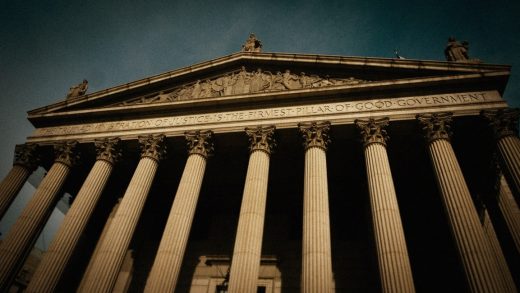Supreme Court set to hear first 2nd Amendment case in a decade: Here’s what’s at stake
A gun rights case is on the U.S. Supreme Court’s docket for this fall, and it’ll be the first in almost a decade on the topic of the Second Amendment. More specifically, New York State Rifle & Pistol Association, Inc. v. The City of New York will address the transportation of firearms in New York City, a case that could ultimately have implications for the rest of the country.
The 2008 case District of Columbia v. Heller was perhaps the most significant gun rights case in modern American history, but it left some major gaps. In that landmark case, the court ruled that the core of the Second Amendment was the individual’s right to keep guns at home for self-defense. A 2010 case addressed one of the holes of the vague ruling, and nine years later, the New York case will address another: the transportation of arms.
What’s the case about?
New York State, and specifically New York City, has some of the strictest gun restrictions in the country. Those possessing mandatory gun licenses may only keep their guns at home or inside one of the city’s few shooting ranges. When they’re transported from one to the other, guns must be unloaded and locked in a container.
An NYPD regulation stated that residents are not permitted to transport their guns out of city boundaries—to shooting ranges outside of the city limits, or to second homes, for example. Taking issue with the constitutionality of the restriction, the New York State Rifle & Pistol Association filed a lawsuit, which has now escalated to the highest court in the land.
What’s different this time?
The last time the Supreme Court heard a Second Amendment case was in 2010, which predates a barrage of mass shootings, including in Aurora, Colorado; Newtown, Connecticut; Orlando; Las Vegas; Parkland, Florida; Pittsburgh; and most recently, El Paso and Dayton. It was before the founding of various gun safety advocacy groups, including Everytown and March For Our Lives, the student-led group created by Parkland survivors.
March For Our Lives this week filed an amicus brief for the New York case. (Amicus briefs, common at the Supreme Court level, are briefs filed by parties not involved in the lawsuit, but who may have interest in the issue.) MFOL’s brief, filed pro bono by law firm Hogan Lovells, argues that the past Heller ruling does not eliminate the rights of Americans “to devise solutions to social problems that suit local needs and values.” It details nine cases of real-world gun violence, from Parkland to South Central Los Angeles.
“The point of our brief is that it’s bringing home the real-world impact of gun violence on the young people whose stories we’re telling,” said Ira Feinberg, a partner at the firm, “and that’s a perspective that we wanted to make sure the court has.”
Will the case actually be heard?
Although it’s on the docket, there’s a chance the case may not be heard. After the case escalated, New York City pulled the transportation restriction, and the legislature in Albany passed a law saying the city is not permitted to regulate transportation. The city then motioned the Supreme Court for the case to be dismissed.
The plaintiffs are arguing that the case is not truly moot, and that the only reason the city passed the law was to pull the case. The court will decide in October whether it’ll still be heard. If it is, the moot case could ironically have a significant national impact.
What’s the likely ruling?
Proponents of gun safety worry that the justices may have taken this case because they felt the New York City regulation was too restrictive and should be reversed on constitutional grounds. The bias of the court, conservative as it was during the Heller case, certainly suggests the verdict may lean in that direction.
Certainly, the law is on the side of gun rights proponents because of the notion of “strict scrutiny,” meaning a judge should strike down a law unless the government can show in court that it’s narrow enough not to violate citizens’ rights or equal protection.
What could the ruling mean?
The court’s ruling could affect whether a federal law could be passed regarding the transportation of firearms. It should be noted that transportation is not technically the same as “carry,” which various states’ open- and concealed-carry laws address. But there’s enough vagueness that the ruling, if articulated in a certain way, could also impact carry laws.
(11)



